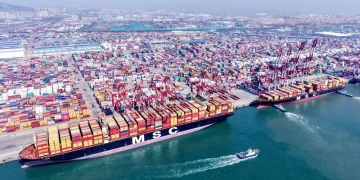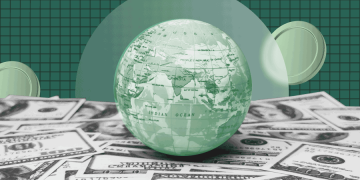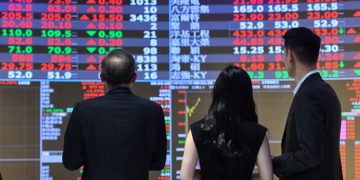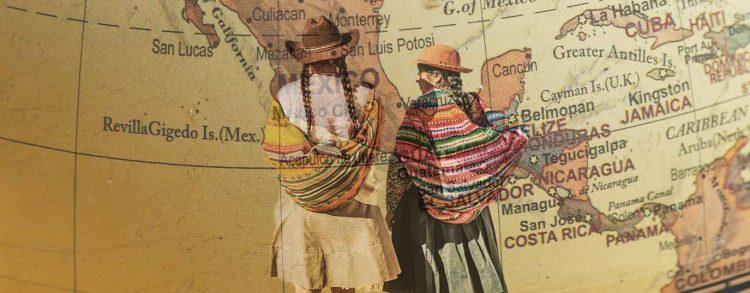Introduction: A Closer Look at Latin America’s Economic Recovery Post-Pandemic
In the aftermath of the COVID-19 pandemic, Latin America, like much of the world, faced a steep economic downturn. The region’s economic landscape, already burdened with structural issues, was further shaken by lockdowns, disruptions in global supply chains, and a massive public health crisis. However, as the world enters 2025, Latin America is witnessing signs of recovery—though the path to full economic stabilization remains challenging.
Latin America’s economies, which are heavily dependent on exports of raw materials and agricultural products, have been exposed to volatile global commodity prices and the shifting dynamics of international trade. As governments in the region push forward with recovery plans, there is optimism about the potential for growth, even if the journey is uneven.
This article will explore the current economic situation in Latin America, focusing on key indicators like GDP growth, inflation, and unemployment. We will also delve into the governmental reforms, trade agreements, and political shifts that are helping to shape the region’s economic recovery. Alongside these positive developments, we will examine the persistent challenges—such as income inequality, political instability, and the reliance on commodity exports—that may slow down or complicate the region’s growth trajectory. Finally, we will evaluate the outlook for Latin America’s economic future and discuss whether the region is truly poised for sustainable growth or if it faces further setbacks.
Economic Indicators: Key Metrics of Recovery
GDP Growth: An Uneven Rebound
The economic recovery in Latin America has been far from uniform. While some countries have managed to bounce back quickly, others continue to struggle with slow growth or recessionary pressures. According to the International Monetary Fund (IMF), Latin America’s GDP growth in 2024 is expected to be around 2.5%, which is an improvement compared to the contraction seen in 2020, when the region’s economies shrank by nearly 7.4% on average.
Countries like Brazil and Chile, two of the largest economies in the region, have managed to see a relatively quick recovery, fueled by rebounds in the demand for commodities like soybeans, copper, and iron ore. However, other nations such as Argentina and Venezuela are still grappling with economic stagnation and deep-seated structural issues, including high inflation and a lack of foreign investment.
While GDP growth is projected to pick up, the pace remains slower than in other developing regions, particularly in Asia-Pacific. Much of this is tied to the region’s dependence on commodity exports, which, while profitable, leave Latin American countries vulnerable to the fluctuations in global demand and prices.
Inflation: A Persistent Concern
Inflation remains one of the key concerns in Latin America’s recovery process. The region has historically had higher inflation rates compared to other parts of the world, and the pandemic exacerbated this issue. For instance, Argentina has been battling inflation rates above 50% for several years, leading to diminished purchasing power for consumers. Brazil, Mexico, and Chile also faced inflationary pressures, though they have managed to keep rates more manageable through monetary tightening and fiscal reforms.
High inflation is not only a burden on consumers, who face higher prices for basic goods, but it also creates uncertainty in the investment climate. Central banks across Latin America have had to balance combating inflation with fostering economic growth, often raising interest rates to stabilize prices. This approach, while effective in controlling inflation in the short term, could have negative consequences for investment in the medium-to-long term.
Unemployment: Slow Improvement
The pandemic wreaked havoc on labor markets across the world, and Latin America was no exception. At the peak of the crisis, the region saw massive job losses, with unemployment rates soaring to record highs. By 2024, the situation has improved, but unemployment remains a challenge. In Brazil, for instance, the unemployment rate has dropped from over 14% during the pandemic to just under 9%—still higher than pre-pandemic levels.
Youth unemployment is an especially pressing issue in the region, with many young people unable to find stable employment. This has led to increasing concerns about social unrest, as younger generations face an uncertain economic future. Governments in countries like Mexico, Colombia, and Peru are working on job creation programs, but the lack of formal job markets and the informality of much of Latin America’s economy remain significant hurdles.

Government Reforms: Driving Economic Recovery
Fiscal Policies and Reforms
Governments across Latin America are introducing a variety of fiscal reforms aimed at improving economic stability and boosting growth. In Brazil, President Lula da Silva’s government has focused on increasing public spending to stimulate growth, but also introduced measures to reduce the budget deficit over the medium term. Similarly, Mexico has sought to bolster social spending through programs such as the Bienestar Program, which aims to provide support to low-income households and reduce poverty.
However, these fiscal policies are not without their challenges. Many of the countries in Latin America, particularly in Central America and Argentina, are dealing with high debt levels, and some of the fiscal measures have raised concerns about sustainability. While the region’s sovereign debt is generally more manageable than that of some African or Middle Eastern nations, the threat of fiscal crises remains present, especially if global interest rates continue to rise or commodity prices fall.
Trade Agreements and Foreign Investment
Trade agreements have become increasingly important to the economic recovery of Latin America. Many countries have sought to strengthen their trade ties with China, the U.S., and the European Union. For example, Mexico has benefited significantly from its participation in USMCA (formerly NAFTA), which has helped anchor its manufacturing sector and attract foreign investment.
Brazil, as a key member of the Mercosur trade bloc, is focused on improving trade relations with other Latin American countries and negotiating deals with the EU. In particular, the EU-Mercosur Agreement, if ratified, could open new avenues for Brazilian and South American exports, particularly in agriculture and commodities.
However, the region is also confronting challenges when it comes to attracting investment. The political volatility in countries like Venezuela and Argentina often dissuades foreign investors, while the Brazilian Amazon deforestation crisis and its environmental implications have caused global pushback against certain sectors. Despite these challenges, the green economy, including renewable energy projects and sustainable agriculture, is seen as a promising avenue for growth, especially given the region’s rich natural resources.
Challenges to Growth: Income Inequality, Political Instability, and Reliance on Commodities
Income Inequality: A Growing Concern
Latin America has long struggled with income inequality, one of the most pronounced in the world. While some countries in the region, like Chile and Argentina, have made progress in reducing inequality in the past few decades, the pandemic has exacerbated the divide between the rich and the poor.
Governments are implementing redistributive policies, but the challenge of addressing inequality remains. For example, Brazil’s Bolsa Família program and Mexico’s social programs are designed to provide financial support to lower-income households. However, these measures are often seen as insufficient, and the wealth gap remains wide.
Political Instability and Governance Issues
Political instability and corruption are also significant barriers to sustained economic growth in many Latin American countries. While countries like Chile and Uruguay have managed relatively stable political environments, other nations such as Venezuela, Nicaragua, and Bolivia face ongoing political strife and governance issues.
The populist policies of certain governments, combined with the historical corruption that has plagued the region, pose risks for foreign investment and economic development. Many investors remain cautious, fearing that political instability could derail growth prospects or lead to unfavorable changes in economic policy.
Commodity Dependence: A Double-Edged Sword
Latin America’s dependence on raw commodity exports continues to be a double-edged sword. On one hand, the rise in global demand for commodities—particularly in emerging markets like China—has led to economic booms in countries like Brazil, Chile, and Peru. On the other hand, this reliance makes the region vulnerable to fluctuations in global commodity prices. A sharp drop in oil, copper, or soybean prices could stall recovery efforts and push countries back into recession.
The region’s reliance on these exports also makes it difficult to transition to a more diversified, knowledge-based economy. While there are pockets of growth in technology, finance, and services, these sectors are still small compared to the traditional commodities sector.
Outlook: Will Latin America Be Able to Sustain Its Economic Recovery?
Latin America’s economic recovery is far from certain. While there is significant optimism around the region’s ability to rebound, the path forward is fraught with challenges. Structural issues, such as income inequality, political instability, and over-reliance on commodities, continue to weigh heavily on economic prospects.
That being said, the region is showing signs of resilience. Trade agreements, government reforms, and growing interest in green energy offer opportunities for growth, and with global commodity prices remaining relatively high, Latin America could continue to see positive growth in the near term.
However, in the long run, the region must address its deep-rooted challenges in governance, inequality, and economic diversification to ensure that its recovery is sustainable. If Latin American nations can navigate these hurdles and build more diversified, resilient economies, the region has the potential to be one of the global growth leaders in the coming decades.
Conclusion
Latin America is at a critical juncture in its economic journey. After a painful period of contraction, the region is showing signs of recovery, but sustaining growth in the face of ongoing challenges will require bold policy
reforms, diversification, and a concerted effort to address inequality and political instability. Whether Latin America can overcome these obstacles will depend on the region’s ability to implement meaningful reforms and attract both foreign and domestic investment. The coming years will likely determine whether the region will chart a course towards sustained economic growth or fall back into the cycles of volatility and stagnation that have historically defined its economic history.

































